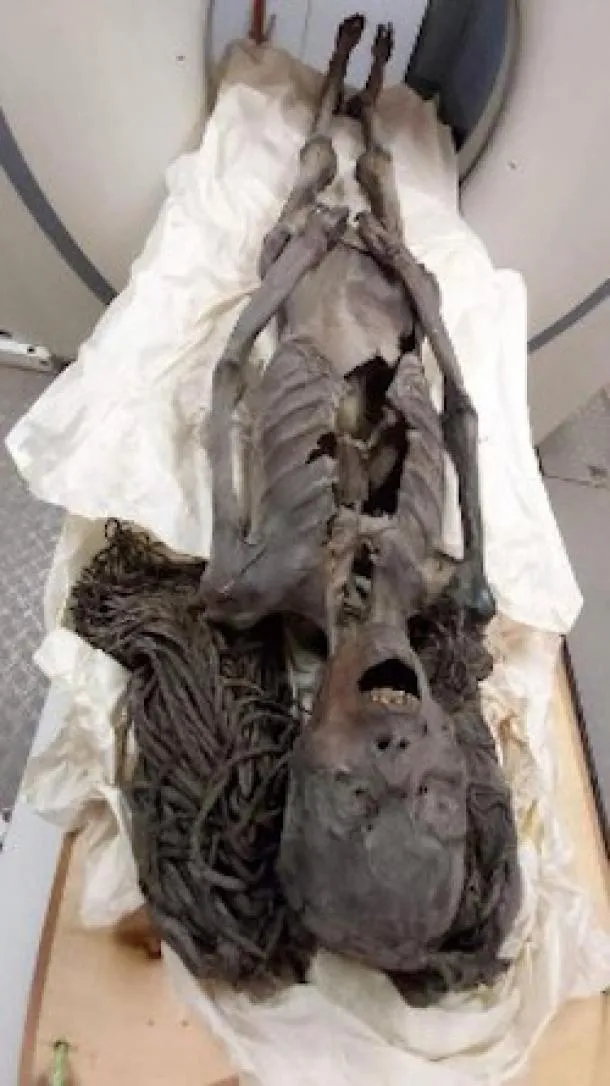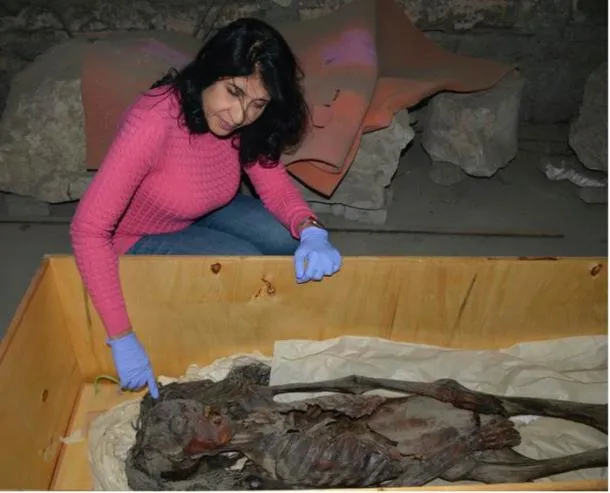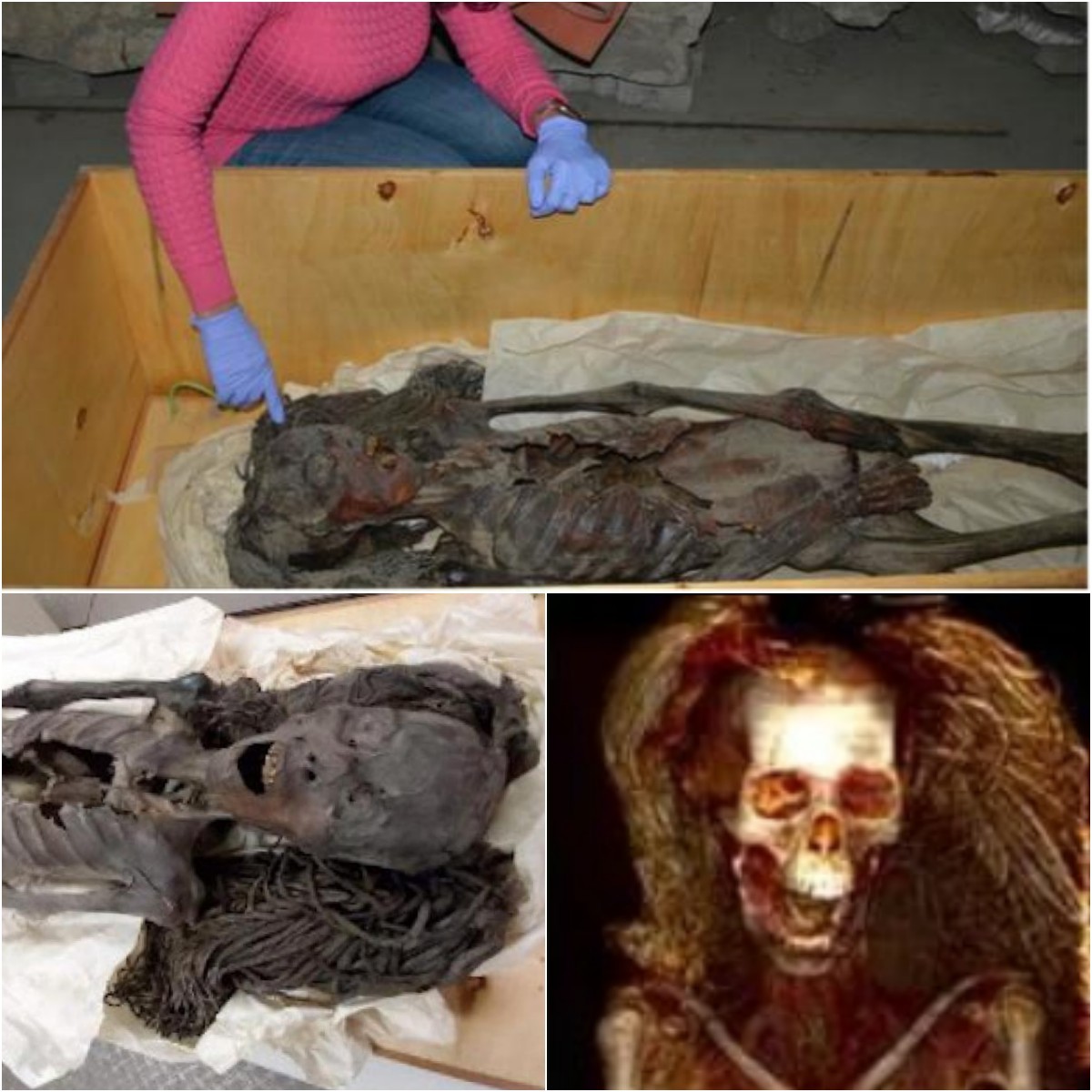Shocking Revelation: ‘The Screaming Mummy’ – New Advanced Scientific Techniques Illuminate Her 3,500-Year-Old Painful Death
In 1935, an archaeological expedition led by the Metropolitan Museum of New York unearthed a fascinating and eerie find in the tombs of Deir Elbahari near Luxor, Egypt. Beneath the tomb of Senmut, a prominent architect and possible lover of Queen Hatshepsut, archaeologists discovered a separate burial chamber containing the mummified remains of an elderly woman. Her mouth was agape, frozen in what appeared to be a scream, earning her the nickname the “Screaming Woman.”

For decades, this mummy has captivated researchers, and recent studies using advanced scientific techniques have provided new insights into her life, death, and the mysterious expression she carried to the grave. The findings have just been published in the science journal Frontiers in Medicine.
- The Mystery of the Screaming Man Mummy
- Where the West Actually Meets the East—The Tarim Mummies
A Remarkable Preservation
The mummy of the Screaming Woman was initially kept at the Kasr Al Ainy School of Medicine in Cairo, where it was studied alongside other royal mummies, including that of Tutankhamun. In 1998, she was moved to the Cairo Egyptian Museum, but her coffin and rings have been displayed at the Metropolitan Museum of New York since their discovery.
The latest research, led by Dr. Sahar Saleem, a professor of radiology at Kasr Al Ainy Hospital of Cairo University, has utilized cutting-edge technology to delve deeper into the circumstances surrounding this mummy. Using computed tomography (CT) scans, the team was able to virtually dissect the mummy, estimating her age, identifying pathologies, and examining her state of preservation.

Despite being buried for approximately 2,500 years, the Screaming Woman’s body remains in remarkably good condition. Her teeth, although worn and missing in places, suggest that she lost several teeth before death, evidenced by bone resorption in the sockets. She also showed signs of mild arthritis in her spine, a common condition in older adults.
- Enduring Mystery of the Screaming Mummy: Mortal Wounds and Divine Justice—Part I
- Why Do We Love (and Fear) Mummies?
The Mystery of Her Death
One of the most intriguing aspects of this mummy is her unsettling facial expression. Typically, ancient Egyptian embalmers would close the mouths of the deceased during mummification, yet the Screaming Woman’s mouth remained open. This peculiarity has led to much speculation about the cause of her death.

The research team found that the Screaming Woman had not undergone the usual mummification process. Her brain, diaphragm, heart, lungs, liver, spleen, kidneys, and intestines were all intact, contrary to the standard New Kingdom practice (1550–1069 BC) of removing internal organs. Despite this, the woman was embalmed with costly, imported materials such as juniper and frankincense, suggesting that her mummification type was not due to neglect or poor craftsmanship.
Dr. Saleem and her co-author, Dr. Samia El-Merghani, employed techniques like scanning electron microscopy (SEM), Fourier transform infrared spectroscopy (FTIR), and x-ray diffraction analysis (XRD) to analyze the embalming materials. Their findings revealed that the woman’s hair had been dyed with henna and juniper, and her wig, made from date palm fibers, was treated with crystals to stiffen and color it black, a hue associated with youth in ancient Egypt.
Despite this detailed examination, the exact cause of the Screaming Woman’s death remains elusive. However, Dr. Saleem hypothesizes that her agonized expression may have been caused by a rare phenomenon known as cadaveric spasm. This condition, often linked to violent deaths or extreme emotional distress, causes the muscles to stiffen at the moment of death, preserving the deceased’s final expression. There are multiple mummies that have been found with the scream expression frozen on their faces.

A Time Capsule of Ancient Life and Death
The Screaming Woman is a vivid time capsule, offering a glimpse into the life and death of an individual from ancient Egypt. Her well-preserved body and the costly materials used in her embalming suggest that she was a person of significance, though her exact identity remains unknown. The presence of cadaveric spasm adds a layer of mystery, hinting at a possible violent or traumatic end.
Dr. Saleem’s research also offers support for the existence of advanced trade networks of ancient Egypt, with materials like frankincense and juniper being imported from regions as far away as the Eastern Mediterranean, East Africa, or Southern Arabia.
The Screaming Woman continues to captivate and puzzle researchers, her open-mouthed expression a silent testament to a life—and a death—shrouded in mystery. As scientists continue to apply modern technology to ancient remains, we may yet uncover more secrets of this enigmatic mummy, bringing us closer to understanding the human experience in one of history’s most fascinating civilizations.






